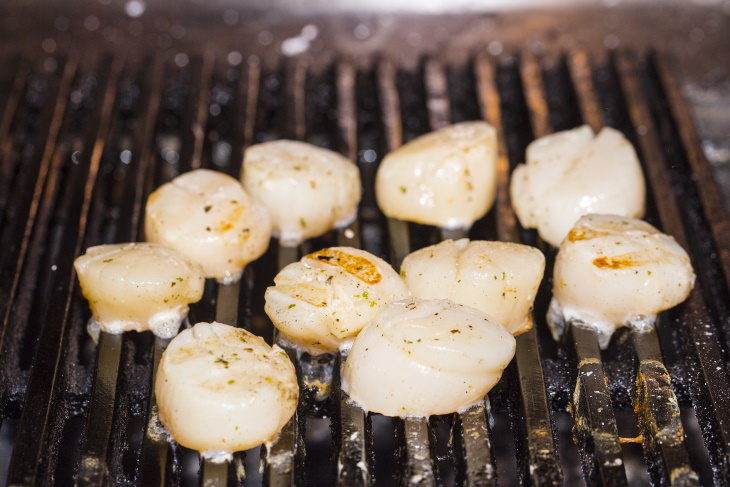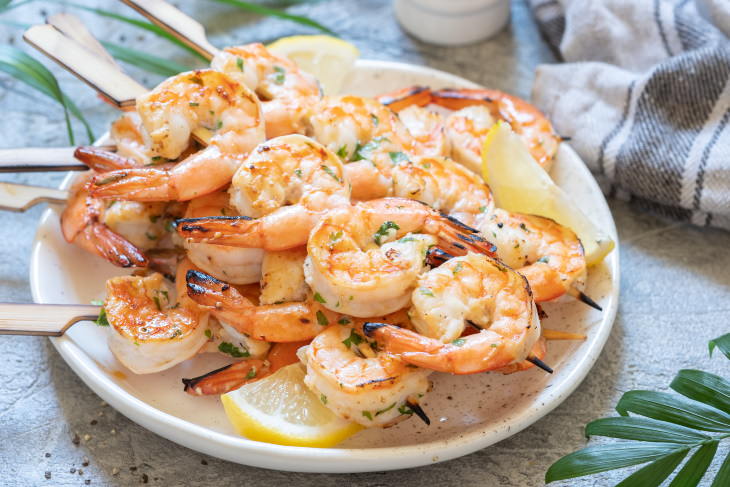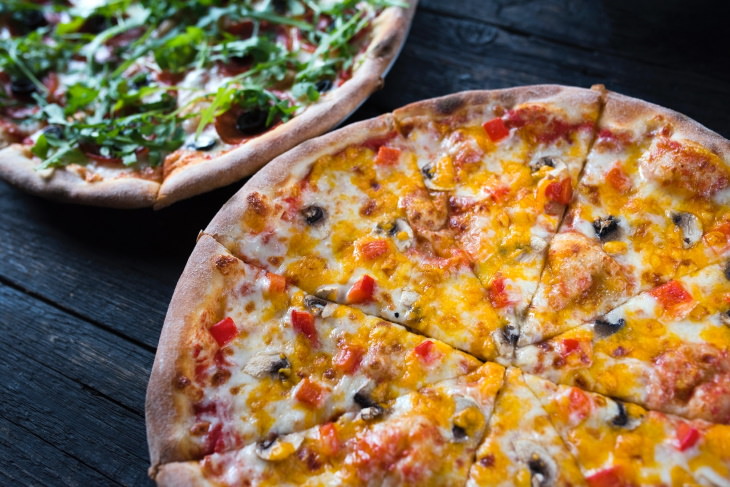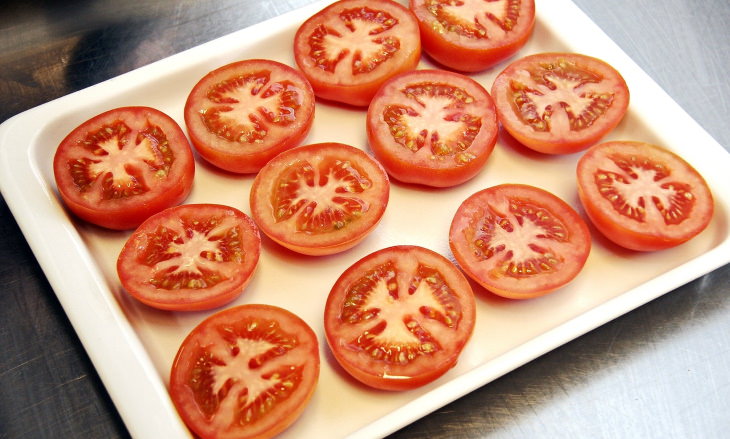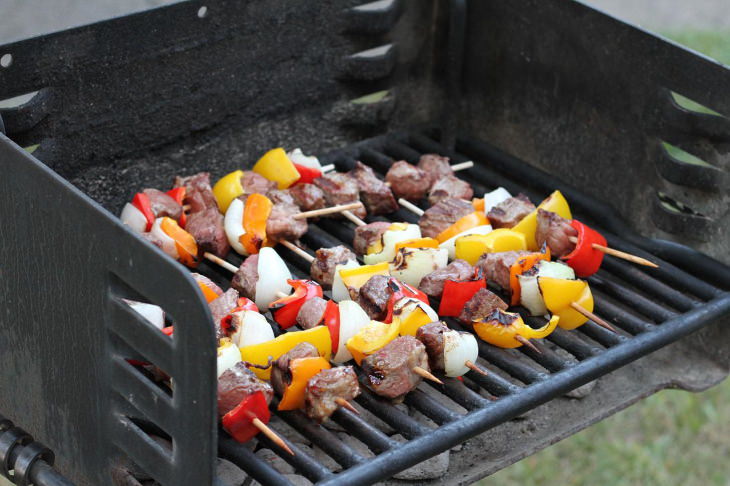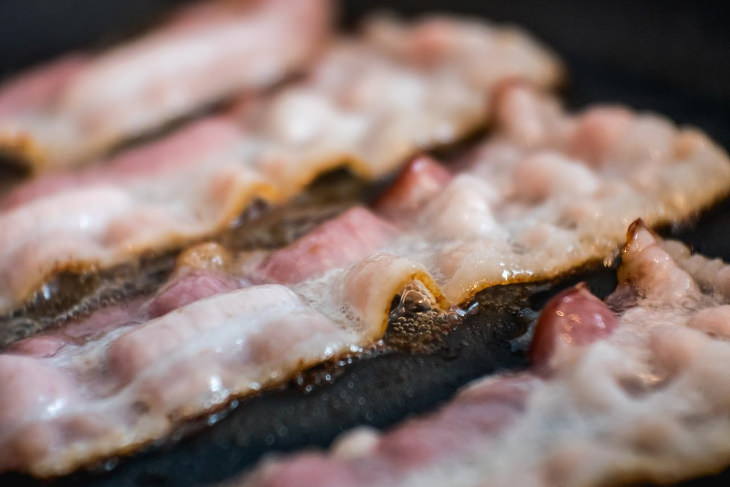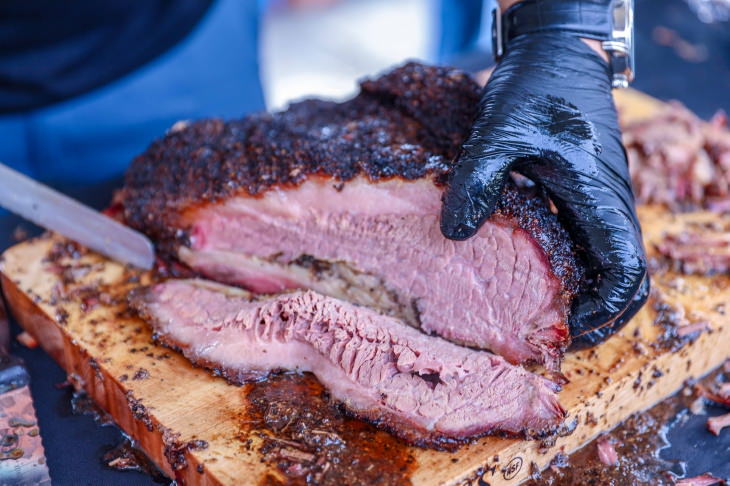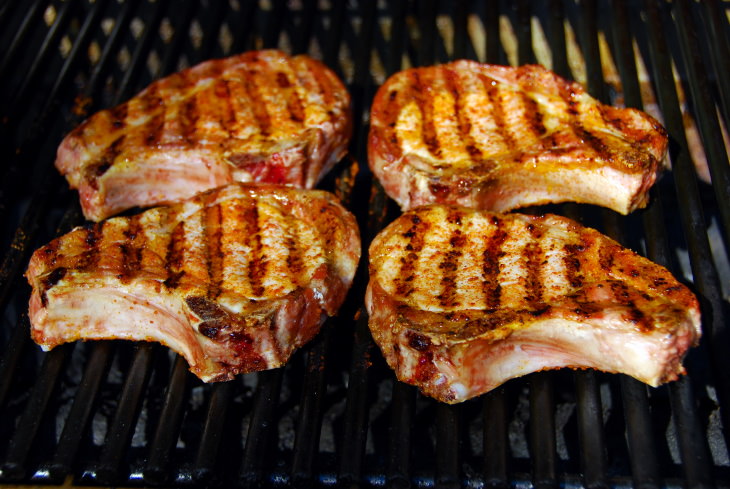1. Flaky fish
When you have trays of food lined up to be grilled, the last thing you want is flakes of fish sticking to the grilling rack and the entire thing falling apart into chunks before you get to eat it. So what’s the solution if you really love grilled fish?
First and foremost, avoid certain types of fish. White flaky fish varieties like bass, black seabass, flounder, perch, walleye, snapper, cod, halibut, and Pacific rockfish are all too lean and flaky to be handled on a grill, and their tender taste will also be overtaken by the smoky grilled flavor. Instead, choose fattier, firmer types of fish, such as salmon, tuna, and swordfish - all these work great on a grill.
Other tips to keep in mind when grilling fish:
- Keep the skin on - it will hold the fish together and prevent it from falling apart.
- Grill the fish on citrus slices or cedar planks.
- Don’t flip the fish - just cover the grill and let the heat finish cooking the fish.
2. Scallops
Continuing the marine theme, here’s one type of seafood you’ll surely ruin on the grill - scallops. They are so lean and tender that grilling will result in tough, leathery scallops that taste like char. Given the high price and delicious potential of scallops, you should really make sure to cook them properly.
The best method is basting them with butter and pan-searing them on both sides until a golden crust forms on the outside. This only takes 15 minutes.
3. Peeled shrimp
Much like scallops, shrimp are naturally very low in fats, which makes them prone to overcooking, even if you only cook them for 5 minutes on both sides. Therefore, it’s best to avoid grilling peeled shrimp.
But when it comes to shrimp, there’s a simple solution - grill the shrimp shell-on. The shells will seal in the moisture for a little longer, especially if you baste them well in oil beforehand. Cook shell-on shrimp for no more than 5-7 minutes to give them a sweet and smoky flavor without overcooking them.
4. Pizza
You see pizza restaurants in Italy use an outdoor oven all the time, so why not try throwing a pizza on the grill in your yard? If this sounds like a bad idea, that’s because it is. Chefs point out that home grills lose heat very rapidly when you open them and putting the raw dough on a surface that’s not hot enough will make it stretch and stick to the grill.
In addition, grills typically don’t distribute heat very evenly, so even if you use a pizza stone to support the pizza dough, cooking it on the grill will not be the same as using a specialized pizza oven (or even a regular oven).
5. Leafy greens and tomatoes
Romaine lettuce and kale are among the very few types of leafy greens that can be safely grilled. Chef Roberto Deiaco points out to Eat This, "Many greens such as Boston lettuce, red leaf, and green leaf, retain a lot of water, and they just wilt. Also, radicchio gets more bitter on a grill."
Therefore, it’s best to avoid putting most types of leafy greens on the grill. Likewise, juice vegetables like tomatoes don’t fare particularly well when grilling, as they tend to fall apart when cooked over a direct flame.
6. Shish kebab
There’s nothing wrong with grilling either meat or vegetables on a stick, but these two types of food require very different cooking conditions. Therefore, grilling both veggies and meat on one stick to perfection is pretty much physically impossible.
The solution? Divide all the ingredients, placing meat on their own sticks and each type of vegetable separately.
7. Bacon
Sometimes, a certain ingredient is unsuitable for a grill for safety reasons. Why is bacon a safety hazard? The grease spatters from the bacon are flammable and likely to cause a fire. Therefore, cooking bacon on the grill is actually very dangerous. And besides, preparing bacon in the oven or even in the frying pan is just much easier.
8. Brisket and other beef cuts
Not all cuts of beef lend themselves well to grilling. Dense cuts like brisket or super tender and lean ones like filet mignon are not suitable for barbecuing.
Prepare the brisket on a low flame for a long time, enough to cook down the cartilage and make the meat extra juicy. Otherwise, it will have a very tough texture. Similarly, grilling fillet mignon will result in a tough and chewy steak due to a relatively low-fat content in this cut. So instead, we recommend searing fillet mignon in a skillet to get that perfectly brown edge and a soft and rosy inside.
9. Pork chops
This one may surprise you, but grilling isn’t the optimal way of preparing pork chops. In fact, the best way of cooking pork chops is in a pan and not a grill. This is because each pork chop is rather lean but has a layer of fat on the perimeter that’s very difficult to render through a grill. When you cook the pork chops in a skillet, this issue is easily solved by simply tilting the pork chop to the side and holding it on the side until the fat has melted. Pan-searing the pork chops will also let the meat get brown and crisp.
As chef Jakob Esko pointed out, “Searing your pork chops on a hot skillet and then transferring them to the oven to cook through is the best way to keep this cut moist and tender.”
10. Melty cheese
The fact that you shouldn’t put cheese on the grill may seem obvious, but there are actually several types of cheese that you can successfully grill until golden, including halloumi, aged provolone, or even a whole wheel of brie.
However, we don't recommend experimenting with melty types of cheese, as you will end up with a hot mess on your hands - both literally and metaphorically. Hence, the next time you want to make the perfect cheeseburger, add the cheese on top of the still-warm cooked patty after plating up the burger.


